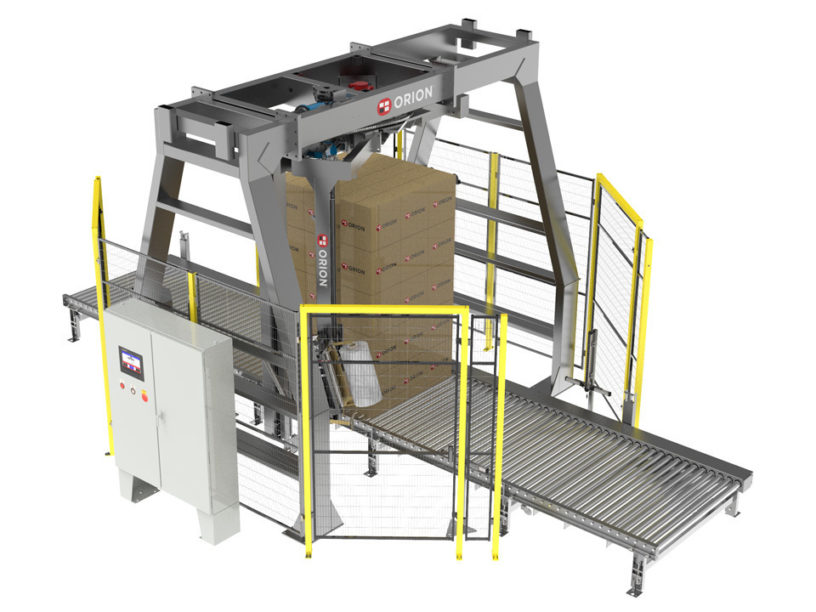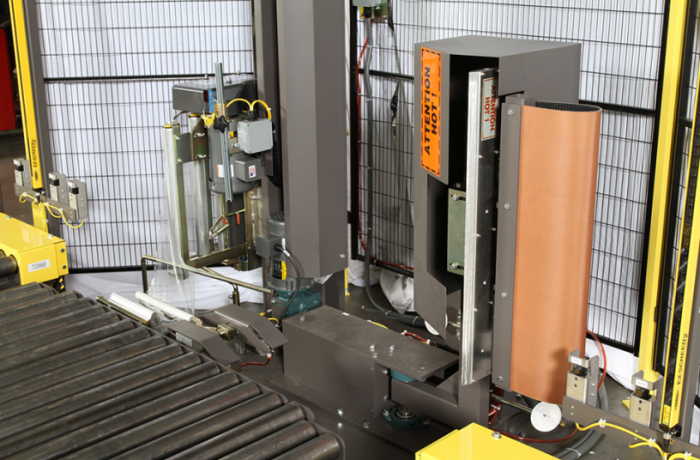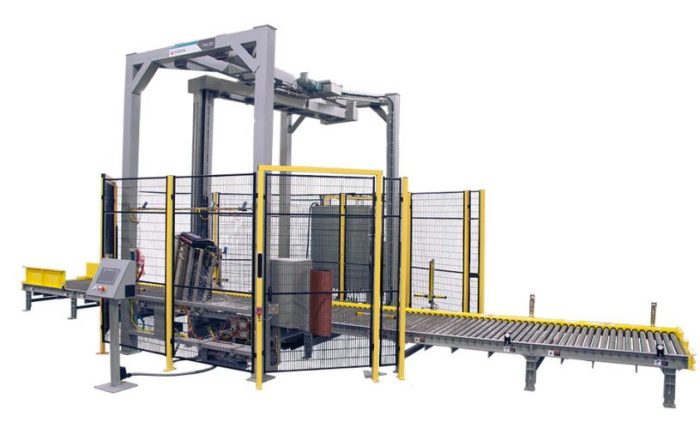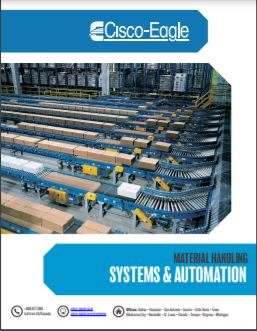The Benefits Of Automated Stretch Wrappers
Wrap your operations in efficient packaging solutions with the use of fully automated stretch wrappers

Automation in the warehouse or manufacturing facility continues its momentum. In many locations, workers and robots of various forms co-existing are now the new normal. Operations want to increase throughput (as always) but are now in an hard battle for people….one that isn’t ending anytime soon. Systems are being installed to reduce time and increase productivity are becoming common for operations of most every size.
One example is the use of automated stretch wrappers.
Automatic stretch wrappers are robotics that is designed to increase speed & safety in pallet-wrapping operations. While this type of function doesn’t get the headlines of picking and packing robots or automated storage systems, it plays a vital role in an area that desperately needs it: the outbound palletizing function.
Stretchwrapping isn’t a “glory” function, but it’s almost the perfect target for automation. It’s low-value add, labor-intensive, slow and repetitive.
Why automate your stretch-wrapping?
Sure, there are other areas in a facility where adding automated solutions seems like a better decision, but don’t overlook stretch-wrapping. There are many benefits.
Important benefits of adopting automated stretch wrappers
- Efficiency increases in your packaging and shipping areas – Improved consistency and versatility
- Safety and ergonomic improvements – Reduce lost productivity and risk of injury
- Cost savings realized – Film reduction and better package protection
Efficiency

With an operation that handles shipping and returns (which is almost every type), high costs associated with packaging are an ongoing concern. Keeping that in mind, your stretch wrapping operation could be extremely expensive, whether through poorly wrapped packages by hand (leading to inconsistencies and reliability of the wrap), or ergonomic issues.
One of the biggest benefits of automated stretch wrappers is increased efficiency
These machines can wrap a pallet much more quickly than a person can, allowing workers to focus on other tasks and increasing overall productivity. Automated stretch wrappers can also be programmed to wrap a pallet in a specific pattern, ensuring consistent, secure wrapping every time. This can help reduce waste and improve the overall quality of the finished product.
Another aspect of automated stretch wrappers that makes them such a valuable addition is their versatility. These machines can be used to wrap a wide variety of items, from small boxes to large pallets. They can also be easily adjusted to accommodate different sizes and shapes of items, making them versatile and flexible tools for any facility.
Safety
Using automated stretch wrappers also means increased safety in your wrapping areas. Wrapping a pallet manually can be a physically demanding and potentially dangerous task, especially if the pallet is heavy or awkwardly shaped. This could lead to lead to musculoskeletal injuries, such as back strain. These injuries can result in lost productivity due to time off work, as well as medical expenses and workers’ compensation claims. Injuries are almost inevitable for employees who perform manual wrapping tasks on a regular basis.
On the other hand, automated stretch wrappers can wrap a pallet with minimal effort on the operator’s part. This can help reduce the risk of injury and improve overall safety in the facility. Along with worker safety, you get more secure loads with each use as well.
Read more: The ergonomics of automation
Cost savings

So of course increased efficiency and safety are great, but did you know automated stretch wrappers can also help save money? Think film reduction.
The film is made to stretch and wrap around a load to keep the product tight and secure. When applied by hand, the film is stretched to a certain percentage, typically around 100%, but this percentage may decrease as the person becomes tired. However, using automatic wrapping machines that pre-stretch the film to a higher percentage, such as 250%, can be more efficient. This is because the pre-stretched film uses less material to wrap a pallet compared to hand-wrapped film at a lower stretch percentage. Using a consistent level of pre-stretched films, such as 250%, on every load can save money in the long term by reducing the amount of film used.
Download Our Systems & Automation Guide
Good systems design helps you build solutions that drive productivity and lower costs. Cisco-Eagle has completed many successful projects for hundreds of companies nationwide, helping clients create efficient material flow systems that deliver results. Our guide highlights what our systems group offers, and how we strive to be your trusted partner.
Download the guide today
Evan Fleishacker




